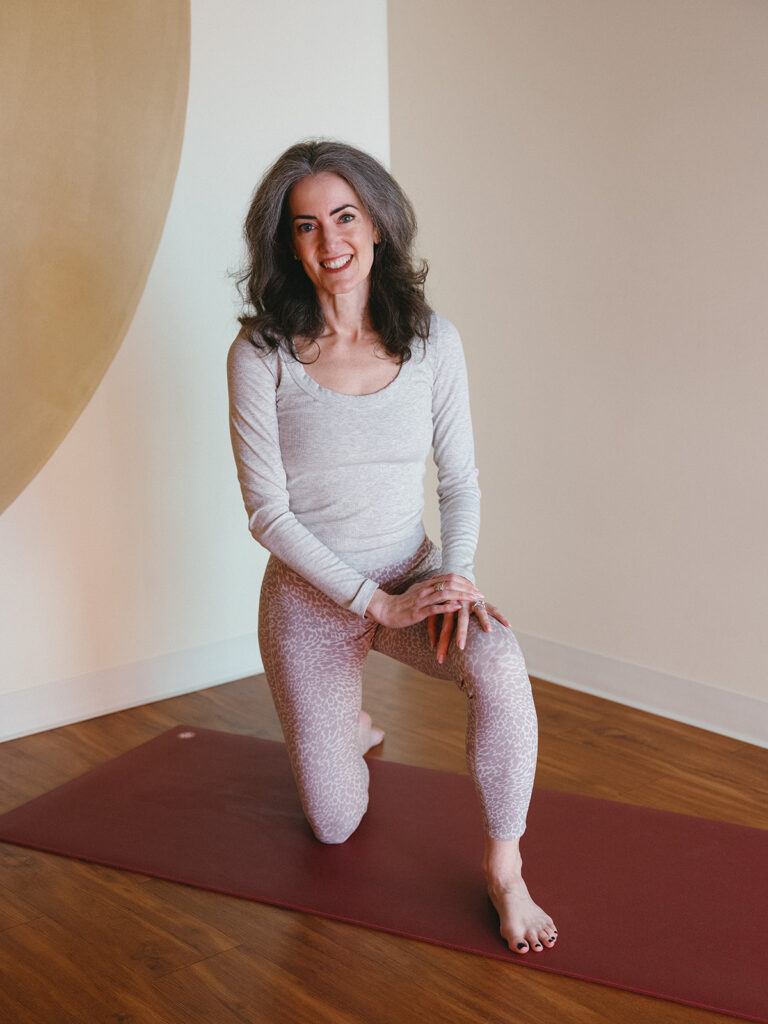In the last 36 hours, I’ve spoken with four athletes who profess interest in yoga but who feel intimidated by going to their first class. Once or twice a week, I get an e-mail from a potential student who worries about coming to yoga for the first time. So I’ve pulled up an old draft I started when a Twitter friend (sidenote: come join us on Twitter, and learn what all the cryptic RTs, #s, and @s mean! I’m @sagetree) asked me two months ago if I had any advice for runners who’d never been to yoga before. Indeed I do! Much of it appears in The Athlete’s Guide to Yoga, and I’ll repeat the main points here.
Your First Class
First, a story: I hated the first yoga class I went to. I was absolutely miserable. Yoga was so much harder than it looked from the other side of the studio door. I didn’t know what to put where, I had no endurance for the work, I didn’t know what language the teacher was speaking, and I really had to pee. By the end, I was trying not to cry, terrified that I’d be breaking protocol if I walked out to find a bathroom. Not a very auspicious start to my future career!
What changed my mind? Prenatal yoga. It was gentler, and I was in the right frame of mind to enjoy the experience. There was zero sense of competition, and it was so easy to feel a connection between what was going on with my body, what was going on with the other mothers-to-be in the room, and a sense of universality.
So there’s my first piece of advice: be open. There will be plenty that feels unfamiliar, even if you have the good fortune of finding a class like Carrboro Yoga Company’s Yoga 101. Why not tell the teacher up front that you’re new and feeling out of place?
Next, stay open. If the first class you drop in on isn’t right for you (remember, mine wasn’t), keep looking. There’s a teacher who’s right for you, and you’ll know it when you’ve found it. I discuss this more in my post on yoga and running shoes.
If you’re an athlete approaching class for the first time, play it safe. Choose a class labeled “gentle,” “restorative,” or “level 1.” This does a few things: first, it puts you in a situation more appropriate for beginners. Second, it will help you avoid the temptation to push too hard. Athletes are naturally competitive, and seeing advanced variations might goad you to go too far. Keep your eyes on your own paper, as they say. Third, it ensures that you won’t be undermining your sport performance by following a practice that is too draining for your current stage of training.
Finally, remember (or learn) the very first principle of the very first limb of yoga: ahimsa. First, do no harm. If anything seems wrong for your body, skip it. A good teacher will make you feel comfortable modifying or even omitting things that don’t work for your body.
Readers, any other advice or good stories from your first yoga experiences?
Hi! I’m Sage Rountree, PhD, E-RYT500. Thanks for stopping by!
As a yoga teacher mentor and trainer, I’m here to help you become (almost) everyone’s favorite yoga teacher.
Related Posts
- Yoga Sequencing Hacks to Keep Class Fresh (without Planning New Classes Every Week)
- Phase 5 of Teaching Development: Mastery, Legacy, and Becoming a Teacher of Teachers
- Why Learning to Teach Yin and Restorative Yoga Makes You Better at Teaching Everything
- Stop Overthinking Every Word in Yoga Class: The 3-Cue Rule for Confident Teaching
- The Mindset Shift That Transforms Your Yoga Teaching
Work with Me
The Workshop Workbook
Design a sold-out workshop for only $77 $57—watch your career take off!
Mastering the Art of Yoga Sequencing
Build your confidence in the classroom as you create your own recipe box of yoga lesson plans and deeply learn the S.E.R.V.E. Method to help your students and your career.
Teaching Yoga to Athletes
Become an MVP yoga teacher and turn athletes into champions—plus, earn great money making a difference.
300-/500-Hour Yoga Teacher Training
Feel secure in your skills and your career! Fully online and hybrid options are both available.
get every resource you need as a yoga teacher in the Zone
Everything you need to become (almost) everyone’s favorite yoga teacher is waiting inside. Join for free!

